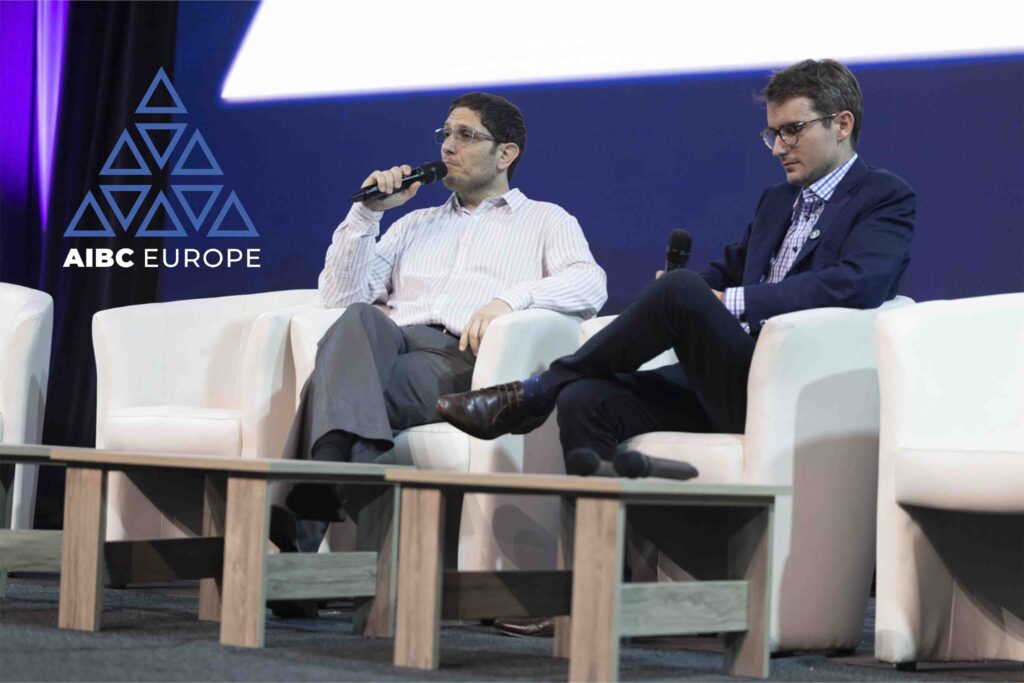AIBC Malta: Onboarding the next wave of web3 games

Cal Evans, sat down with On Yevin, founder and managing partner, Coin Intelligence Fund at the second day of the AIBC conference to discuss the next generation of web 3 games.

What we’ve seen with blockchain-based games so far has been absolutely horrible, says On Yevin. Despite this he is optimistic, ‘I already see a huge change in the industry over the last few months – I think personally the games are becoming good. Founders are learning from each other’s mistakes.’
As Cal says, it was easy to spot games jumping on the bandwagon. ‘We’re a web 3 game’ was a covert way to say, ‘we’re financing a token’.
“We’re now starting to see the mirroring and marriage of good tech and deployment of web 3 in games. When we talk about web3 I marry it into the NFTsector. I talk about current games that can give you the ability to get in-game purchases, like skins.”
How can Legacy games adopt NFT tech?

Following on with this, Yevin says, “There’s no doubt in my mind that everything based on NFTs for the in-game items and characters is a huge revolution.”
Yevin can attest to the painful experience of playing a game – and after 12 months losing everything.
“I spent hundreds of hours, had an amazing time playing the game but I wanted to be able to keep my character and items I worked so hard to achieve.
“When you are able to have every part of the game as an NFT- that can be huge. Firstly it comes as a collectible. I’m not a big fan, but people are obsessed with collectibles. I need to have to have in-game utility but it’s important to recognise people can save these items as collectibles.
Secondly I can use these and optimise them by selling, renting or in the long-term transfer in-game items or characters from one game to another game. It’s going to completely change the industry but I’m sure it’s going to happen.
Yevin believes it will definitely happen with car racing games or games a bit less complicated than something like World of Warcraft.
Play-to-earn – one big Ponzi scheme?
2Everyone’s obsessed with bashing play-to-earn and saying it’s one big Ponzi scheme. it’s not. Play-to-earn has existed for more than a decade already. The biggest problem is it is against the game’s rules.
Yevin goes on to explain that he’s not interested in leveling characters. He asks why, if someone is willing to do the work for a few 100 dollars, he shouldn’t be able to take advantage and save time by skipping to the good part.
“It’s not like I’m doing it to get achievements in the wrong way. I just want to get to the stage where I can start playing again, because that’s where the real fun starts.”
The reality is when we talk about onboarding – the tech is already here, asserts Cal.
“What’s happening now is that worlds are starting to collide. Things I buy in the real world I’ll be able to use in games. People that have worked in games for years have begun to grow into the crypto industry. A lot of companies that just stuck a crypto token in to reward players didn’t do very well.”
He goes on to talk about how companies like H&M are letting you buy online clothing originally designed for the metaverse – which are now being transferred to games. Artima – a company he’s been working with – has just finished producing every NFT for Formula 1. What’s really exciting he says, is the web3 gaming element that’s been brought out.
“Now you can go and purchase official Formula 1 vehicle parts – and build your own race car. You can physically create your own digital Web 3 Formula 1 racing team.”
How do companies that are in the web3 space get engagement?
It’s very well known in the industry that the main part of marketing is based on the community. Most marketing efforts will not work with crypto projects similar to traditional projects. It’s really difficult to do, everyone wants to do it – but you can’t fake it. If you try to sell your community will know it. Think about how to do your best to onboard players – if you have a good game it will become organic, concludes On.









